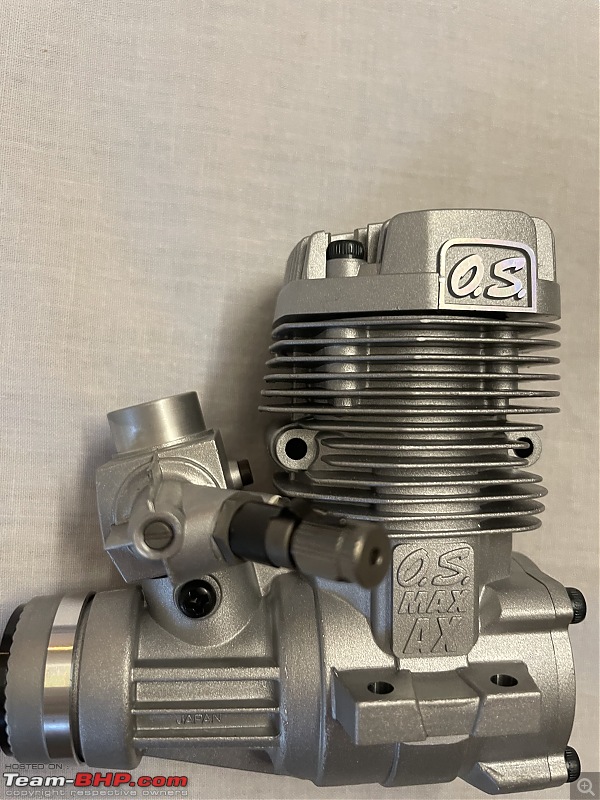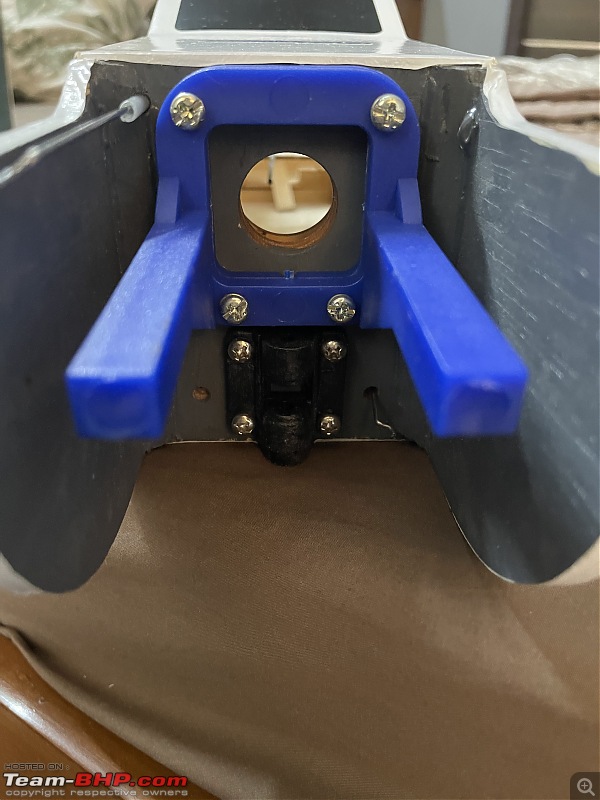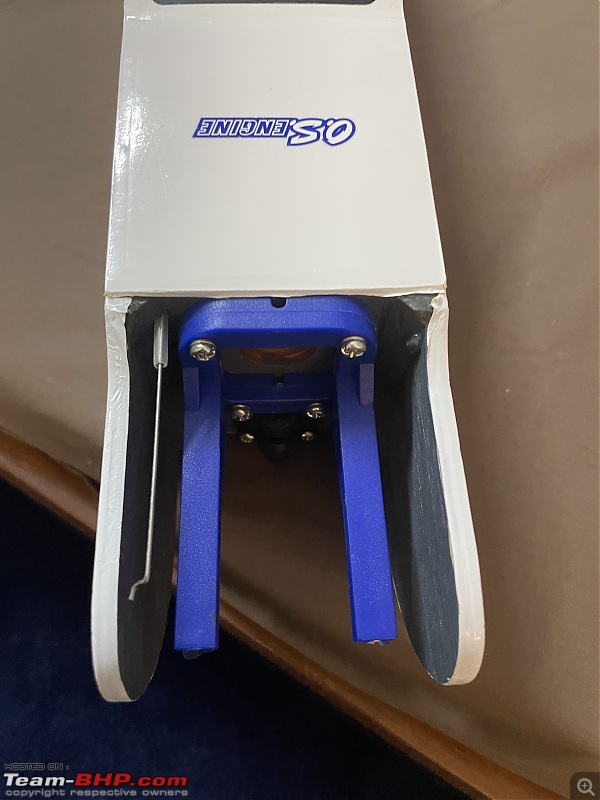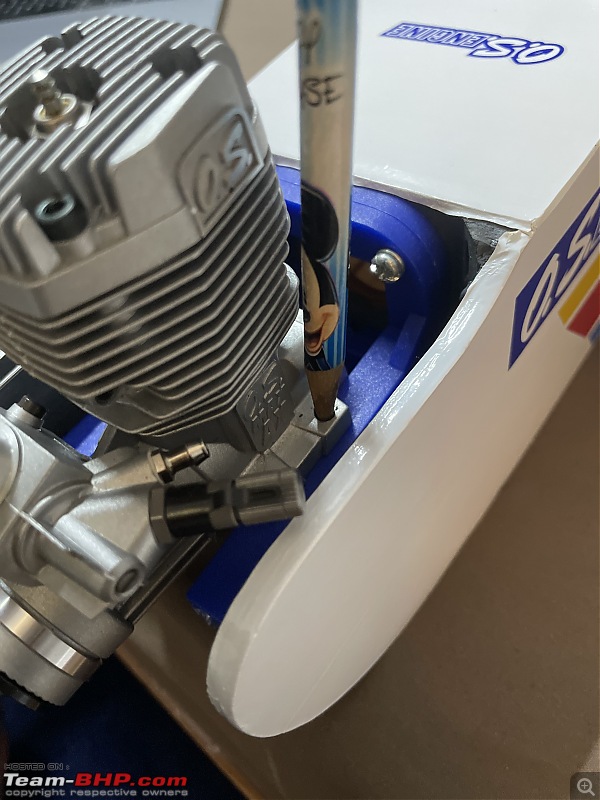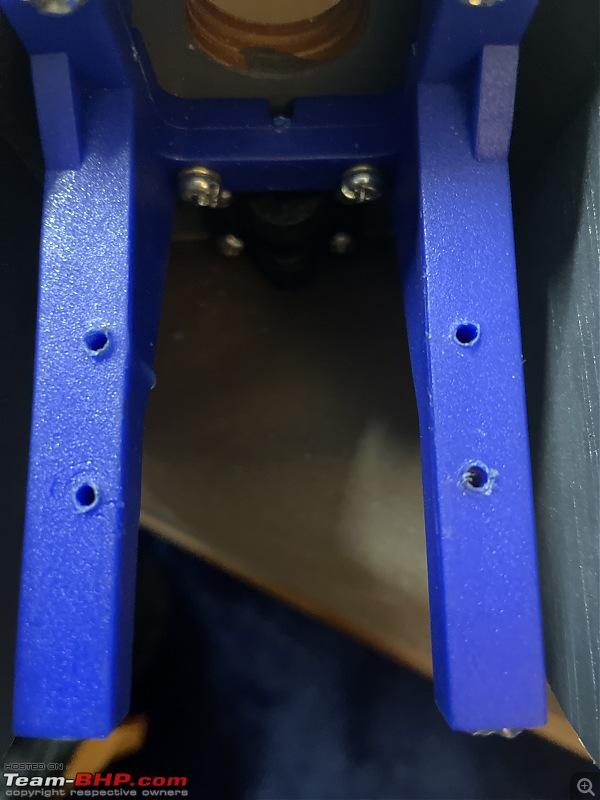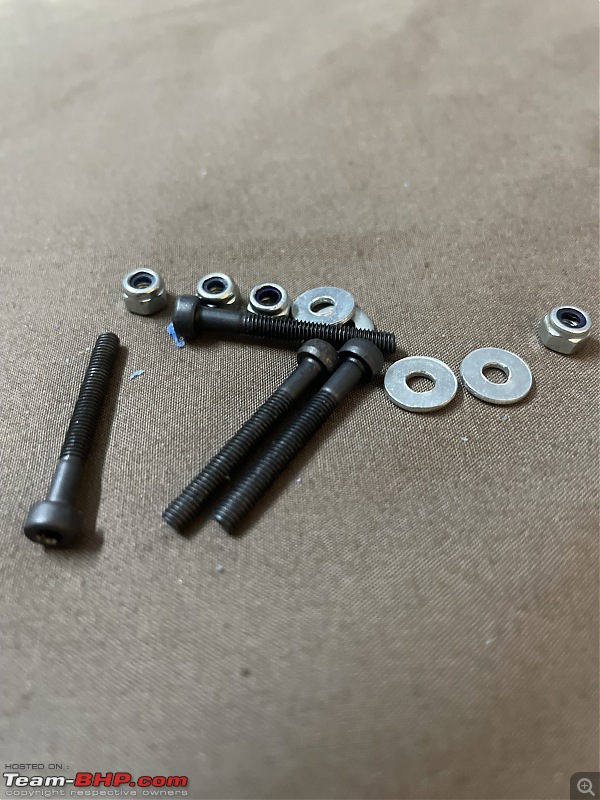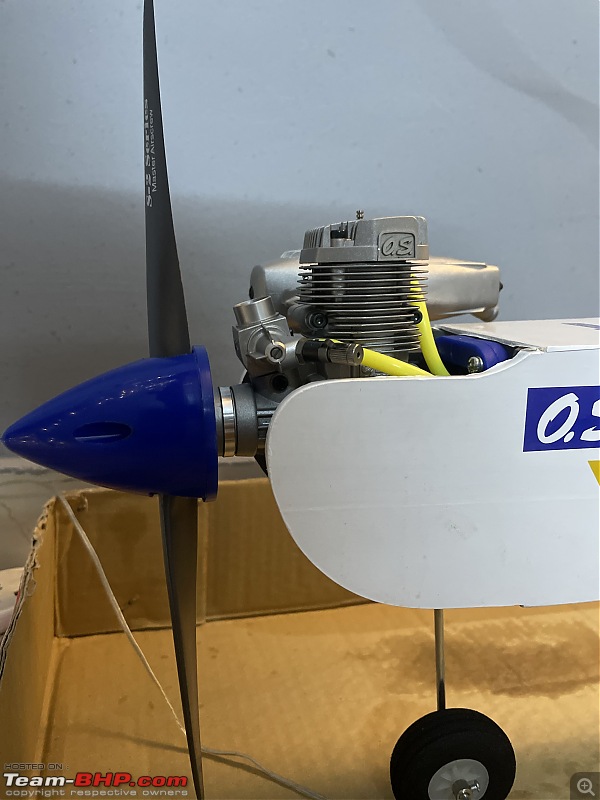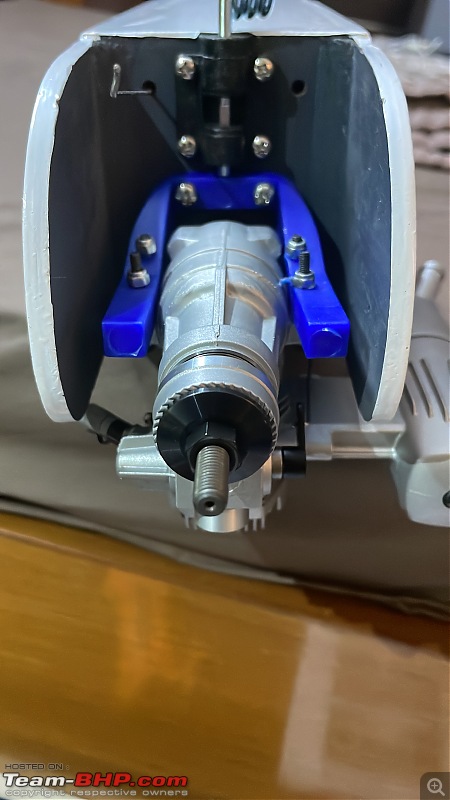| |||||||
| Search Forums |
| Advanced Search |
| Go to Page... |
 |
| Search this Thread |  10,366 views |
| | #1 |
| BHPian | Beginner's Guide | Flying RC Planes I have had a thing for aeroplanes since childhood, thanks to my parents who have worked for an airline through which I had early exposure to flying, etc. I remember how flying used to be in the mid and late 90s, it had very less crowd, nicer meals, toys, Boeing 747s and much more. It has really become just another thing now but more on that later. In the early 2000s as a kid, I wondered if there is some sort of a small plane which could be flown with a remote but I could never find one till the year 2012 when I was in Hyderabad for a short visit and I came across a shop which had RC planes, Cars and more, checked the prices and realised that as a student I simply couldn't afford it. Life moved on and I completely forgot about it until recently when I was casually reading things on the internet and somehow was navigated to a forum where RC hobbies were being discussed and then I started to dig more. I was hooked on to the internet for a week and kept on watching videos about the same and reading about it. As an absolute newcomer, I realised I had a lot to learn in theory before I could think of actually flying. The thing with this hobby is you don't know where to start and who'll help and the fact that it is a rare hobby also doesn't help the newcomers at all. I am so excited to share my learnings and findings with you all over here with the hope that it helps people get into this hobby, also because I think we all are a community of like-minded people and it just feels so good to share this with people who can relate to it. I'll try and keep it very simple and write it in pointers so that it is easier on the eyes. Types of RC planes :
Types of Internal Combustion engines :Nitro engines (2 strokes & 4 strokes) - can range from anywhere as small as 1.5 cc to as big as 120cc or even more, the size of the engine is chosen according to the size of the plane and the purpose. These are powered by special fuel which is a mixture of methanol, oil (castor, synthetic or both) and a small percentage of nitromethane, a lot of people also blend their own fuels. Gas engines - These run on the usual petrol and are costlier than the nitro engines, they also come with an ignition module which takes care of the correct firing order and other things. OS and Saito are some of the famous names which manufacture these engines, both are Japanese. A lot of hobbyists are moving to electric motors from engines. Most of the models under PnP, RTF, and Bundle to fly will have mostly electric motors, if you want to go the engine way, you'll have to choose an ARF or a Kit. Starter accessories for engines : |
| |  (82)
Thanks (82)
Thanks
|
| The following 82 BHPians Thank KharbandaKartik for this useful post: | 2himanshu, abhisheksircar, Acceleron800, Alfresco, alpha1, aravindhunt, AROO7, ashking101, bhphog, BoneCollector, Bulldogji, CarNerd, Carpainter, catchjyoti, cogWheel, Contrapunto, dailydriver, deep_behera, DFendyr, Dr.AD, dsr001, Foxbat, Gannu_1, GForceEnjoyer, GJ01, GTO, Herschey, HumbleBee, IcarusMan, Jaguar, jayanthb, Jeroen, jkrishnakj, JoshuaS, Karthik Chandra, Kaydee55, kung_foo_fanta, kutts, KuvamBansal, lapis_lazuli, libranof1987, maddyg, mak.prasada, manubg92, Maverick1977, Maverick_4662, MJ144, Nair.V8, NerdyMillennial, nikhil.neon, NirmalK, One, PGNarain, promit, Raghu M, raihan, Raj_RD, RedTerrano, Rehaan, RGK, saikarthik, Samfromindia, satvik4134, Shubhendra, skanchan95, somspaple, SRISRI_90, SS-Traveller, t3rm1n80r, Tanu3000, TSIboy, udainxs, vinay5795, VinNam, vinodvayyat, Vishal.R, wbd8779, whitewing, xsrahul, yesyeswe, ysjoy, zavegur |
| |
| | #2 |
| Team-BHP Support  | Re: Beginner's Guide | Flying RC Planes Mod Note: Thanks for sharing! Moved to "Shifting Gears" & will go to our homepage this week  |
| |  (1)
Thanks (1)
Thanks
|
| The following BHPian Thanks GTO for this useful post: | KharbandaKartik |
| | #3 |
| Distinguished - BHPian  | Re: Beginner's Guide | Flying RC Planes Thanks for this elaborate write up. I have never flown a RC model plane myself, but I have seen them quite a bit. Here in the Netherlands we have quite a number of RC plane clubs. Some might even have their own little airstrip! There is another type of RC plane that I find fascinating, the completely self build. My brother in law builds his own model completely from scratch. He even makes the drawings himself, using photographs and or visiting aviation museums. Enjoy your hobby Jeroen |
| |  (3)
Thanks (3)
Thanks
|
| The following 3 BHPians Thank Jeroen for this useful post: | KharbandaKartik, KuvamBansal, Vishal.R |
| | #4 |
| BHPian Join Date: Dec 2005 Location: bang
Posts: 900
Thanked: 3,279 Times
| Re: Beginner's Guide | Flying RC Planes On my son's insistence, I once bought a RC engine. Don't remember the make but was some Chinese 2 stroker. It costed around 4.5k. The general idea being bonding over a father son project during the weekend and imparting my knowledge of IC engines to my son.  We got the fuel, Spare glow plug and the lighter too. It did run for a while and then refused to start. No matter how much I tried, it just died on me. So to save my face, ended up working on actual bike IC Engines with him which were more fun. The RC engine is still lying somewhere in the cupboard. I hear the critical step is the run-in of the new engine and the propeller length and weight are critical. Last edited by srini1785 : 22nd November 2022 at 12:43. |
| |  (2)
Thanks (2)
Thanks
|
| The following 2 BHPians Thank srini1785 for this useful post: | aravindhunt, KharbandaKartik |
| | #5 |
| BHPian Join Date: May 2008 Location: bangalore
Posts: 53
Thanked: 129 Times
| Re: Beginner's Guide | Flying RC Planes Wonderful, thanks for sharing. Do share some approximate costs so someone interested is able to understand the budgets needed. |
| |  (1)
Thanks (1)
Thanks
|
| The following BHPian Thanks surfatwork for this useful post: | VinNam |
| | #6 |
| Senior - BHPian Join Date: May 2009 Location: Mumbai
Posts: 1,484
Thanked: 6,459 Times
| Re: Beginner's Guide | Flying RC Planes This brings back the memories of my college days. As a child I wanted to become a pilot, but luck was not on my side at that time. So once in college I decided to pursue aeromodelling as my hobby. I started with electric RTR plane which my cousin got from Singapore. It was a beginners plane which could be also flown indoors like large gymnasiums. The plane had flight time of about 5 - 7 minutes and charging would take long since there were no fast chargers. Batteries were very small capacity Ni–MH cells but these days we have high capacity LiPo batteries and quick chargers. After a year 1 got a bigger powerful electric plane from India Hobby Centre. Flight time was about 20 mins and had extra batteries too so I could fly for and hour or so. I used to fly at Mumbai Race Course with other enthusiasts who had much faster and larger powerful planes with IC engines. Some planes would cost north of 5 lakh rupees. Finally I decided to have a IC engine aircraft but that project never took of due to cost constraints at that time. But since few years India’s aeromodelling fraternity is upset with the aviation body. New rules DGCA drafted has made aeromodelling a dying hobby. At least in cities like Mumbai after 26/11 attack, cops have become very strict as to where and when you can fly model planes. Best place now would be to fly in some rural area or away from the cities. But still Sunday mornings one can see couple of model planes flying around Mahalaxmi Race Course. I do stop by to take a glimpse and cherish happy flying memories I have. Attached is picture of my plane which I still have it and hope to see it fly again. As the quote says "Your wings already exist. All you have to do is fly." |
| |  (10)
Thanks (10)
Thanks
|
| The following 10 BHPians Thank RM Motorsports for this useful post: | Alfresco, Dr.AD, JoshuaS, KharbandaKartik, NerdyMillennial, One, Rehaan, saikarthik, VinNam, yesyeswe |
| | #7 |
| BHPian Join Date: Jan 2018 Location: Pune
Posts: 53
Thanked: 551 Times
| Re: Beginner's Guide | Flying RC Planes I have been building and flying RC planes and drones since 2013. I started off with a RTF 4ch glider (powered) made out of foam, Sky Surfer from RcBazaar. Highly highly recommend something like this if you have never flown before. From that, I moved to building planes out of depron sheets since you get a lot of free plans for the same on the internet (most are designed to be made from either 3mm, 5mm, 6mm depron sheets which are easily available in India as well). While Futaba's and Hiteks are great premium radios, they come with a lot of struggles because of being a closed eco system. Their receivers are very expensive, availability in india is very limited etc. I would recommend you take a good hard look at the TX16s from Radiomaster. They have two variants of that radio, one has is a 4-on-1 module that can basically work with 4 different brand and protocol receivers and the other variant has an ELRS module. Both of these radios come with and extra RF module bay so you can put in any protocol module in that and it'll work. Do not be fooled by its cheap (when compared to futaba) price. The community for these radios is also very active on the internet. I am using the FrSky Taranis X9D since 2015 now and am very happy with the radio for the most part. Though the bug to upgrade to the TX16s is bitting me even though I am not flying as much lately. With work and other responsibilities now taking most of my time, I am unfortunately not very active in this hobby but hope to carve out time for these again since they are so satisfying and you are constantly learning something. Attaching some pictures from those good old teenage days! Learnt to fly on this Sky Surfer.  It is as much fun to build these machines as it is to fly them,  Build complete and ready to fly! 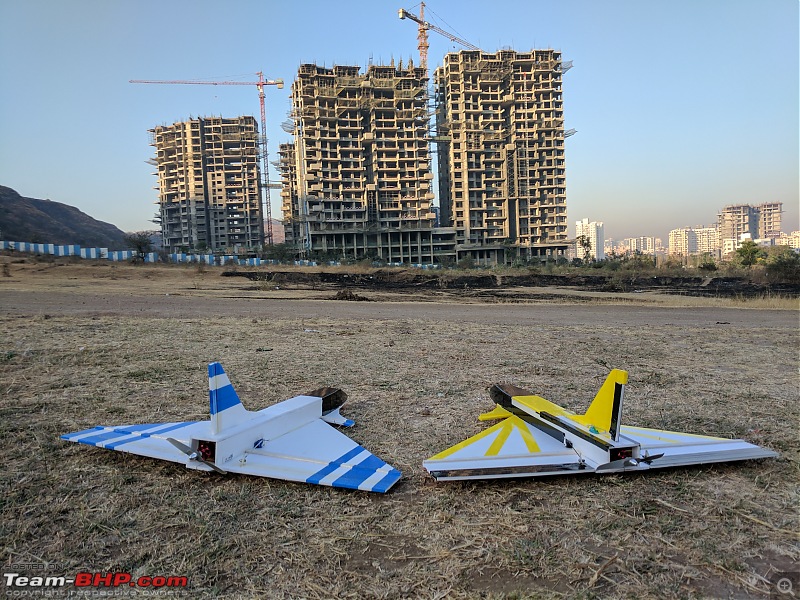  Such models are fun to build and learn the basics of flight on. You can play with them in your room and apply what you've learn back out in the field, 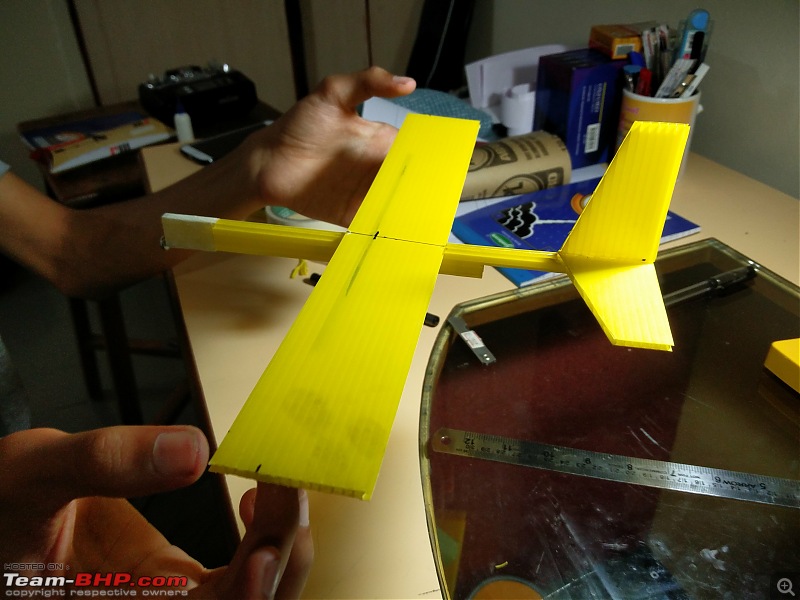 Practising on the simulator before going crazy on the field with your beloved plane.  Started out with kk 2.0 board and kept upgrading this 650 size quad till it had fully autonomous flight capabilities using the initial Ardupilot boards which were based on Arduino Mega along with a stabilised gopro. This was years before we had all these drone laws.  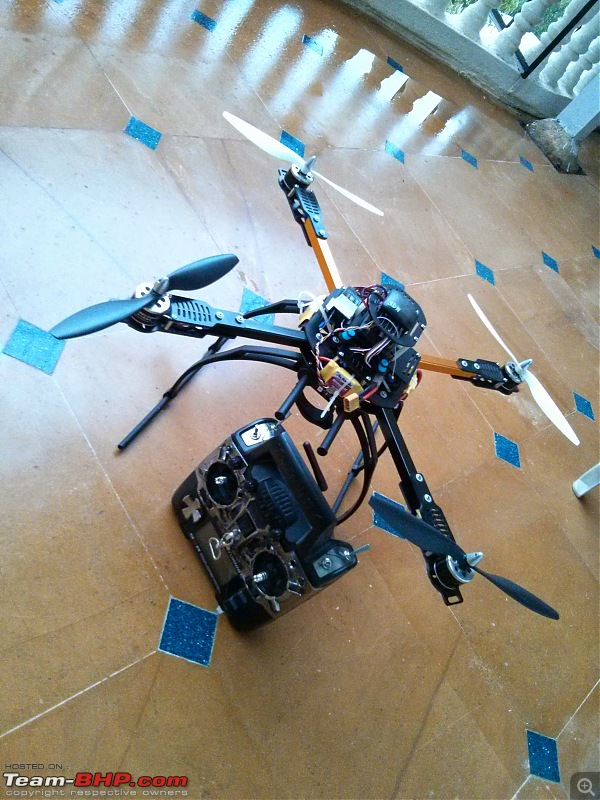 Are you even a teenager if you dont put LED on absolutely everything??  RCPowers F35.  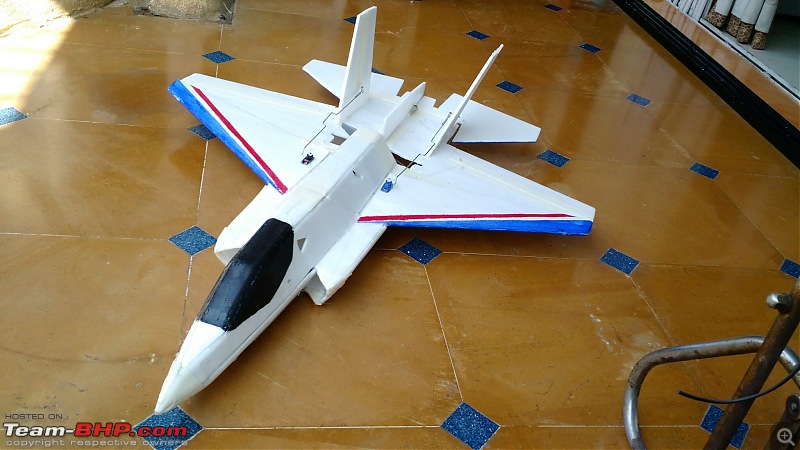 Me and my friend even designed and built this model which had the fuselage made from depron and the wing with laser cut balsa for the Techfest at IIT Mumbai. 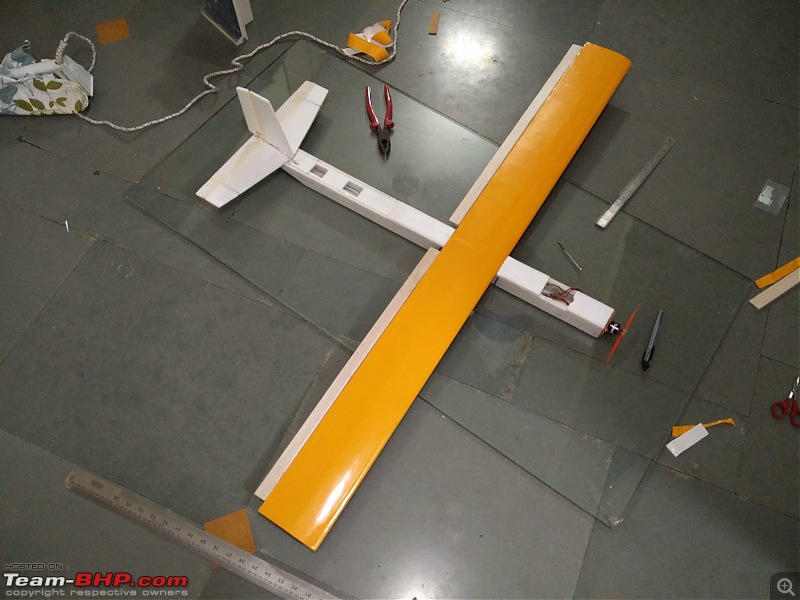  This PT20 Ryan is still the most beautiful RC plane I own.  Feel free to contact me if you want any help whatsoever. Like you said, it is a rare hobby so its always fun to interact with people, newbies or veterans alike. Happy landings! Last edited by NerdyMillennial : 23rd November 2022 at 12:36. Reason: Spelling mistake |
| |  (31)
Thanks (31)
Thanks
|
| The following 31 BHPians Thank NerdyMillennial for this useful post: | Acceleron800, Alfresco, aravindhunt, AROO7, carthick1000, catchjyoti, dailydriver, Dr.AD, Everlearner, Gannu_1, jomson13, JoshuaS, Karthik Chandra, KharbandaKartik, lapis_lazuli, manubg92, Nissan1180, One, PGNarain, pineapple_ameet, QuentinTino, Rehaan, saikarthik, Samfromindia, sbanerjee, t3rm1n80r, VinNam, wbd8779, whitewing, xsrahul, yesyeswe |
| | #8 | |||||
| BHPian | Re: Beginner's Guide | Flying RC Planes Quote:
Quote:
Yes the break in seems to be an important step for engine's long life and performance. Quote:
Quote:
Quote:
Your PT20 looks so good. I'll surely write to you, if I need any help with this. Thanks for the warm welcome ! Last edited by Rehaan : 24th November 2022 at 06:52. Reason: Shortening quoted posts :) | |||||
| |  (1)
Thanks (1)
Thanks
|
| The following BHPian Thanks KharbandaKartik for this useful post: | NerdyMillennial |
| | #9 |
| Newbie Join Date: Jun 2010 Location: Bangalore
Posts: 17
Thanked: 18 Times
| Re: Beginner's Guide | Flying RC Planes I still have my beaver model with the Thunder Tiger pro 46 engine. Haven't flown it for many years. The airframe has taken a lot of beating, had to be repaired multiple times, but I suppose is still in flyable condition. Need to take out the engine and see if anything has corroded/jammed and may be preserve it properly, not likely to find time to fly it in the near future  . Thanks to this thread for reminding me of the long forgotten hobby of mine. Beginners should go with electric powered models is what I would advice considering the hassles of maintaining and running an RC engine. . Thanks to this thread for reminding me of the long forgotten hobby of mine. Beginners should go with electric powered models is what I would advice considering the hassles of maintaining and running an RC engine. |
| |  (1)
Thanks (1)
Thanks
|
| The following BHPian Thanks WheelNut for this useful post: | NerdyMillennial |
 |



